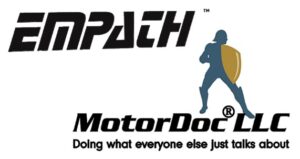Reliability-improvement goals and activities are often focused within a “reliability movement,” rather than on overall business goals. These types of efforts tend to emphasize maintenance improvements, such as, among other things, PM optimization, robust predictive and/or condition-based maintenance, and spare-parts managements. But to be clear, although equipment-reliability improvements might be achieved, there may be more impactful reliability issues that go unaddressed.
In this era of shortages of skilled employees and constrained reliability resources, it pays to focus on bigger-picture results. RAM professionals should be prepared to rethink and refocus their efforts on the goals of the BUSINESS as achieved through equipment reliability improvements.
ONE REAL-WORLD EXAMPLE
Here’s an example of one plant’s challenges and a top-management approach to improving filling and packaging equipment performance and reliability.
In this case, a member of top management with responsibilities over several manufacturing plants in the region, believed in equipment performance and reliability improvement. He was able to see some incremental improvements from the efforts in one of the company’s plants, but felt there could be more of an impact on the business goals, i.e., throughput, cost per unit, on-time shipments, etc. He was also very aware of the constrained resources in the plant: small maintenance organization, few plant-floor supervisors, turnover of production employees, and a very skinny engineering staff (actually only one person serving as a process engineer). But throwing more people and money at the “problem” was not an option.
The improvement activities of the plant in question were, to put it mildly, fragmented. Production-operations management was leading a “lean” initiative, which included setup/changeover-time reduction and “autonomous maintenance” by the operators. Engineering was implementing an equipment downtime tracking system on one of the high-speed filling and packaging lines. And the Maintenance organization was focusing on trying to perform preventive maintenance, while addressing chronic equipment failures, and fabricating “stuff” for Production’s lean teams.
Although significant improvement efforts were underway and results could be observed, they were having a minimal impact on the business goals. These fragmented efforts were giving them fragmented results.
THE CHALLENGES
The packaging and filling lines were the revenue producers of this business. There were multiple lines, some dedicated to a single product and others flexible to handle multiple products. Some of the packaging equipment was portable and could be moved from line to line, as needed.
Improvement Projects: Six filling/packaging lines were all operational. Three were high-speed/high-volume lines and three were lower speed flexible lines. Regardless of the nature of the line, the improvement projects were plant-wide and attempting to address all six of those lines. Consequently, the rate of improvement on any one of the lines was reduced by the lack of facilitating staff, line availability for training, and line supervision buy in.
Downtime Tracking: One of the most important lines (let’s call it Line 10) had a new downtime tracking systems installed to monitor the six major equipment items that were interconnected with conveyors and accumulators. Downtime data was revealing, especially when we factored in the product losses.
There were nearly 20,000 downtime (interruption) events logged in the system, for a total of 136,000 minutes of downtime for Line 10. Translating this downtime to the business case for reliability improvement was most revealing to top management and the production manager. These 20,000 downtime events actually translated to more than $5.4 million in lost revenue!
However, the new downtime tracking system did not capture the “cause” for the downtime. Instead, it collected the location and “reason” such as “filler door open, “no product,” and “mechanical.” The “cause” of the downtime was recorded on a pad of paper by a quality-control person and later put into an excel spreadsheet.
Scrapped Product: When the equipment in Line 10 jammed for some reason, all of the product in that stage was scrapped (literally dumped into bins and carted off). The scrap included approximately 10 different components (bottles to packages alike). None of this scrap was tracked. Just as important, the amount of liquids already filled in the scrapped containers was not documented. Despite waste reduction being a goal, there was no tracking system to quantify the amount or impact of such waste.
Work Orders and Spare Parts : A work-order system was in place to keep track of maintenance work on the filling/packaging lines. Work orders were also used to track where spare parts were being used by line number, NOT by equipment. Remember (as noted previously), some of the equipment was able to be moved from line to line, as needed by Production. Thus, spare-parts usage and failures were unable to be tracked without detective work to determine the type of part and where it could have been used in the listed line.
Preventive Maintenance: Maintenance of the filling/packaging lines was a challenge at best. Production was required to clear the line and turn it over to maintenance for any scheduled PM activity. Two of the high-speed/high-volume lines were the biggest challenge. In Line 10 for example, there were no less than 20 PM intervals of which 14 were calendar based and six were hour-meter based. Running PMs could not be performed due to the equipment enclosures. Needless to say, there were numerous delayed PMs, skipped PMs, and over-performed PMs.
Autonomous Maintenance and Changeovers. Autonomous maintenance by the operators was intended to develop a sense of ownership for daily or routine care of specific equipment. Likewise, changeovers depended on not only the changeover “kits” but also equipment knowledge by the operators performing the changeovers. These two primary “lean” initiatives were compromised by production scheduling and staffing, since operators were routinely moved from line to line as needed.
UNFRAGMENTING THE EFFORTS
With so many improvement activities underway and so many opportunities for improvement where would you start? Focus on results. The most compelling business case was for Line 10 that experienced 20,000 downtime events translating into more than $5.4 million in lost revenue. Learn from improvement efforts on this one line and migrate to the others. This approach resonated with top management. However, Production management and supervision were intent on running product without interruptions for improvement activities or changing the way they “managed” their lines.
Reliability and performance-improvement opportunities were documented, and improvement activities were redefined. Still, the inertia of “this is the way we do things here” prevailed, much to the frustration of top management. As Reliability pros, we must be aware that work-culture change is one of the most critical of factors of sustainable equipment performance and reliability improvement.TRR
ABOUT THE AUTHOR
Bob Williamson is a long-time contributor to the “people-side” of the world-class-maintenance and manufacturing body of knowledge across dozens of industry types. His vast background in maintenance, machine and tool design, and teaching has positioned his work with over 500 companies and plants, facilities, and equipment-oriented organizations. Contact him directly at 512-800-6031 or [email protected].
Tags: reliability, availability, maintenance, RAM, asset management



